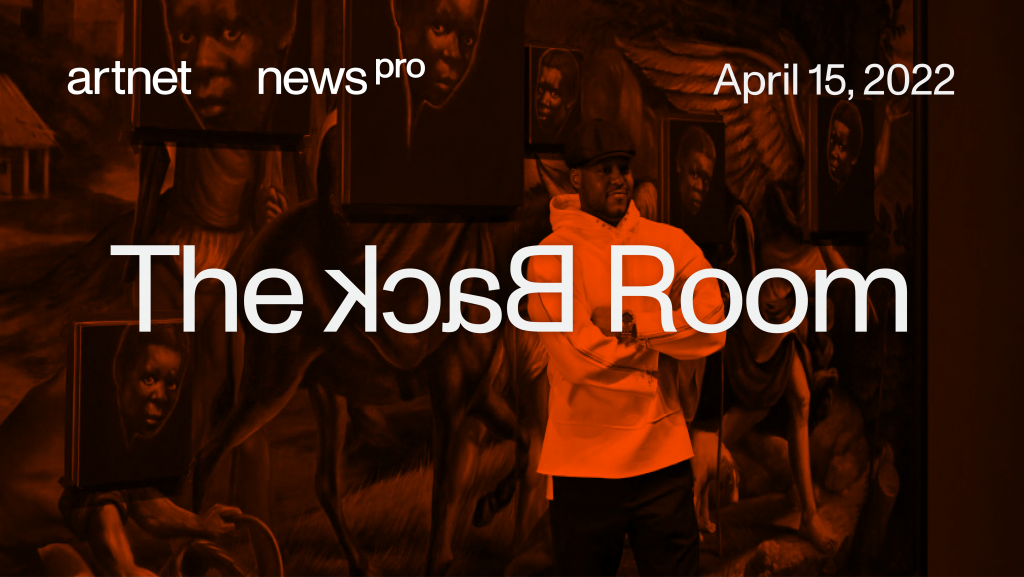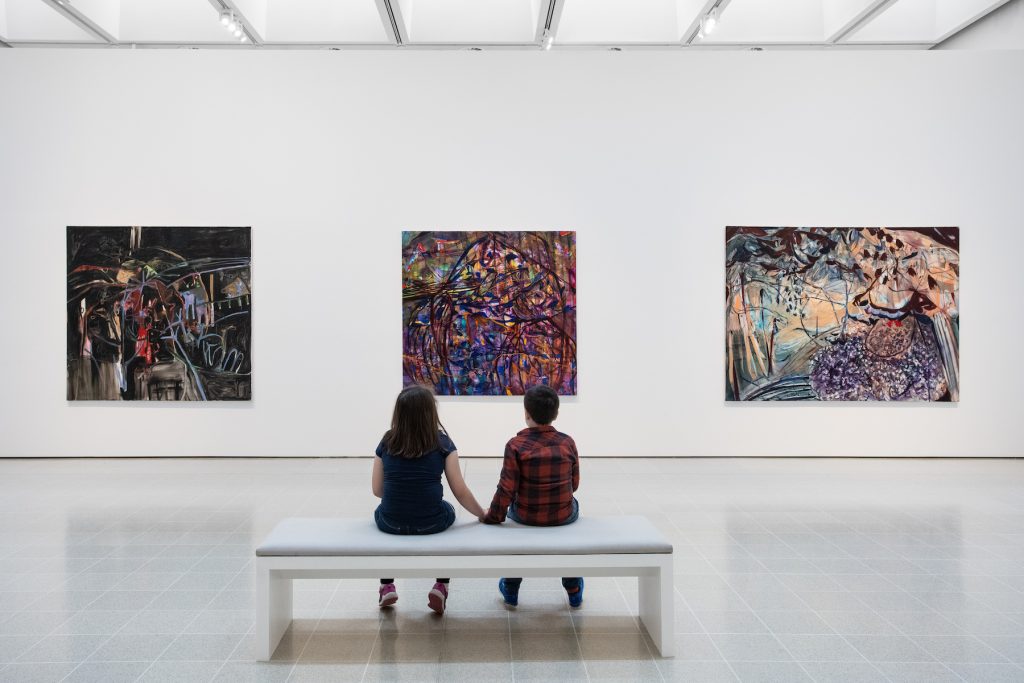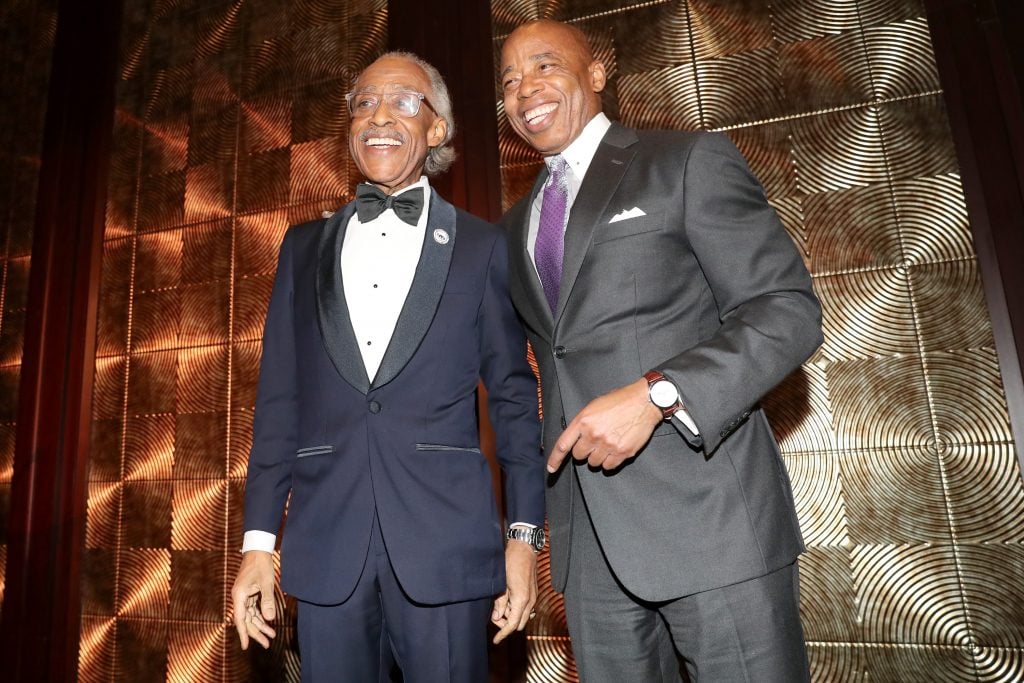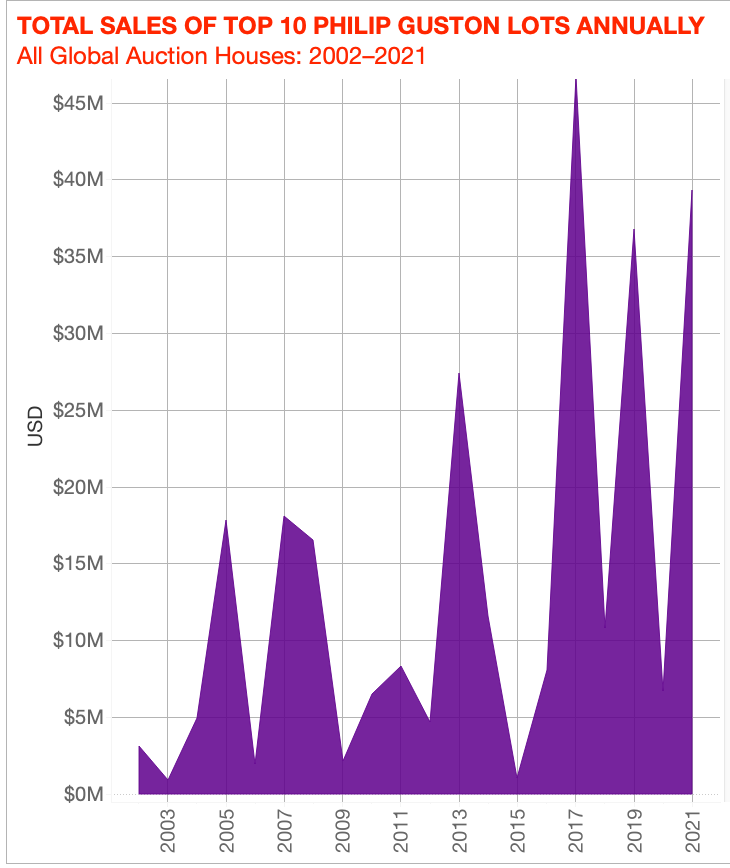The Back Room
The Back Room: Double Trouble?
This week: BOGO or go home, a viral mayor visits NYC’s art world, an auction glimpse at Philip Guston, and much more.

This week: BOGO or go home, a viral mayor visits NYC’s art world, an auction glimpse at Philip Guston, and much more.

Tim Schneider &
Naomi Rea

Every Friday, Artnet News Pro members get exclusive access to the Back Room, our lively recap funneling only the week’s must-know intel into a nimble read you’ll actually enjoy.
This week in the Back Room: BOGO or go home, a viral mayor visits NYC’s art world, an auction glimpse at Philip Guston, and much more—all in a 6-minute read (1,735 words).
__________________________________________________________________________

Jadé Fadojutimi, When Teddy Left (2017); Cavernous Resonance (2020); Jellyfish is a preferable state of mind (2018), in “Mixing It Up: Painting Today” at Hayward Gallery, 2021. © adé Fadojutimi 2021. Courtesy of Hayward Gallery. Photo: Rob Harris.
Want to skip to the front of the line to acquire new work by today’s hottest artists? Then get familiar with the shortcut known as “buy one, give one” (or simply BOGO), in which collectors purchase one piece for a museum for the privilege of buying a second for themselves.
“The phenomenon has been gaining traction over the past decade,” Katya noted in her latest column, with the mega-galleries as the pioneers. At one point, Hauser & Wirth made BOGO arrangements mandatory for private clients hoping to nab a multimillion-dollar Mark Bradford painting.
Since the pandemic, however, the trend has expanded to galleries lower down the financial pyramid and artists earlier in their career arc. Talents known to have attracted BOGO deals include Jadé Fadojutimi, Derek Fordjour, and Titus Kaphar—each of whose works sell for a few hundred thousand dollars apiece on the primary market but can soar into the millions at auction.
“When done right,” Katya wrote, advocates say “BOGO creates a virtuous cycle, benefiting all the parties involved.” But critics contend the practice threatens public museums’ independence and supercharges art-market speculation. Today, we summarize the arguments for and against it.
Boosters identify four main benefits enjoyed by the players in BOGO deals…
Detractors argue that BOGO risks creating a cascading series of downsides…
__________________________________________________________________________
Whether you believe BOGO is a mainly positive or mainly negative force, the overarching point is that it has already had powerful effects on the nonprofit and for-profit sides of the trade alike.
For example, Katya relayed that “a good chunk of ICA Miami’s permanent collection has entered the museum through BOGO arrangements” in recent years, according to artistic director Alexander Gartenfeld.
Collector and Hammer Museum trustee Mihail Lari also argued that gifting one work to a museum “gives the buyers a license to do whatever they want with the second work.” In other words, how much more flipping are we seeing because collectors who BOGO’d feel blacklist-proof after getting artists into MoMA or the Met?
It’s yet another maze for dealers, artists, collectors, and institutions to journey through. But all parties should keep their ethical compasses and game-theory guides handy, because a BOGO proposal could be waiting for any of them around the next bend.
____________________________________________________________________________

NEW YORK, NEW YORK – APRIL 07: Reverend Al Sharpton and Mayor Eric Adams attend 2022 National Action Network Convention at Sheraton New York Hotel & Towers on April 07, 2022 in New York City. (Photo by Johnny Nunez/WireImage)
The latest Wet Paint tracks NYC mayor Eric Adams’s many brushes with the art indstry in the days leading up to his COVID diagnosis, including the Brooklyn Artists Ball (alongside Hank Willis Thomas, Judy Chicago, and Kasseem “Swizz Beatz” Dean) and artist Roy Nachum’s new show at A Hug From The Art World.
Here’s what else made a mark around the industry since last Friday morning…
Art Fairs
Auction Houses
Galleries
Institutions
NFTs and More
____________________________________________________________________________

© 2022 Artnet Worldwide Corporation.
To coincide with the opening of Philip Guston’s contentious retrospective at the MFA Boston, Sotheby’s is offering an abstract painting by the artist in next month’s Modern evening sale in New York that could reset his auction record. We took the prompt to dip into his market in The Appraisal.
____________________________________________________________________________
“I call them our Everymonths.”
—Mega-curator Carolyn Christov-Bakargiev on her monthly tête-à-tête sessions with Everydays: The First 5,000 Days creator Beeple, whom she has invited to show in an exhibition at the prestigious Castello di Rivoli. (WSJ)
____________________________________________________________________________
____________________________________________________________________________
Price: $2.5 million
Selling at: Gallery Wendi Norris, San Francisco
Surrealism and the uncanny will be major threads in “The Milk of Dreams,” curatorial superstar Cecelia Alemani’s exhibition in the soon-to-open Venice Biennale. Among the artists setting the show’s tone from beyond the grave is Spanish-born expat Remedios Varo, whose eerie, symbolically loaded portraits and dreamscapes have been on a tear through the industry of late.
Niño y mariposa (Niño triste)—in English, Boy and butterfly (Sad boy)—is a “symbolic portrait” of Xabier Lizarraga, the son of Varo’s first husband by a previous partner, according to art historian Tere Arcq. Varo mentored and worried over the artistically inclined child; Arcq posits that the painting may have been her attempt at casting “a magical spell to protect her dear boy from any evil influences.”
Her oeuvre is now casting a different kind of spell over bidders, partly due to their rarity. Of the five Varo paintings offered at auction since 2019, three have brought at least $2.7 million, including a record $6.2 million for Armonía (Autorretrato Sugerente) at Sotheby’s in June 2020.
Museums are enchanted, too. Varo’s work features in the acclaimed exhibition “Surrealism Beyond Borders,” which recently traveled from the Met to the Tate Modern. The Museum of Fine Arts Boston and the Toledo Museum of Art in Ohio each acquired a Varo painting this year, as well.
It’s anyone’s guess if a private buyer or an institution is more likely to snap up Niño y mariposa from Gallery Wendi Norris’s back room. But based on Varo’s trajectory, the odds are good that it will sufficiently ensorcel one or the other soon.
____________________________________________________________________________